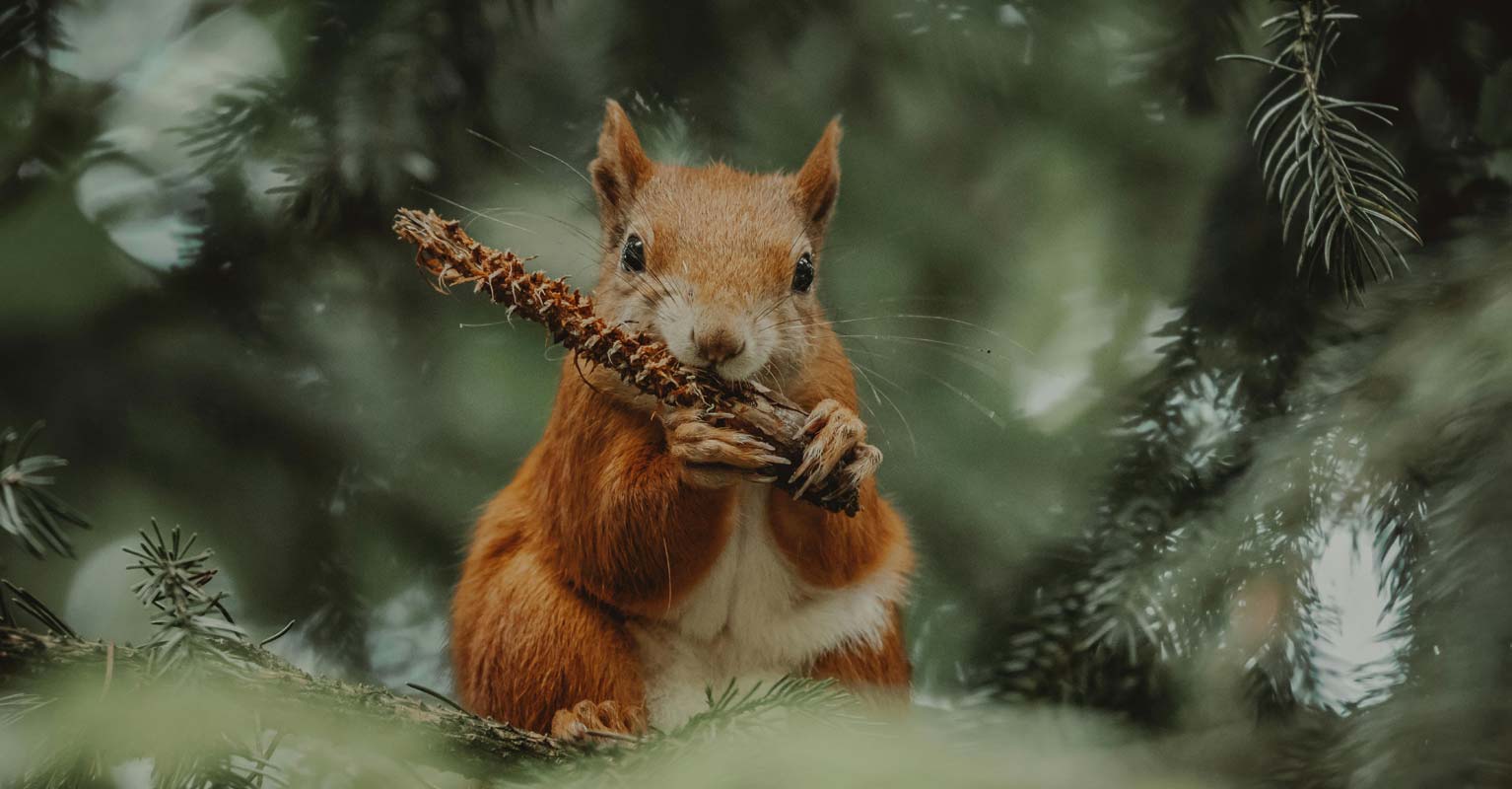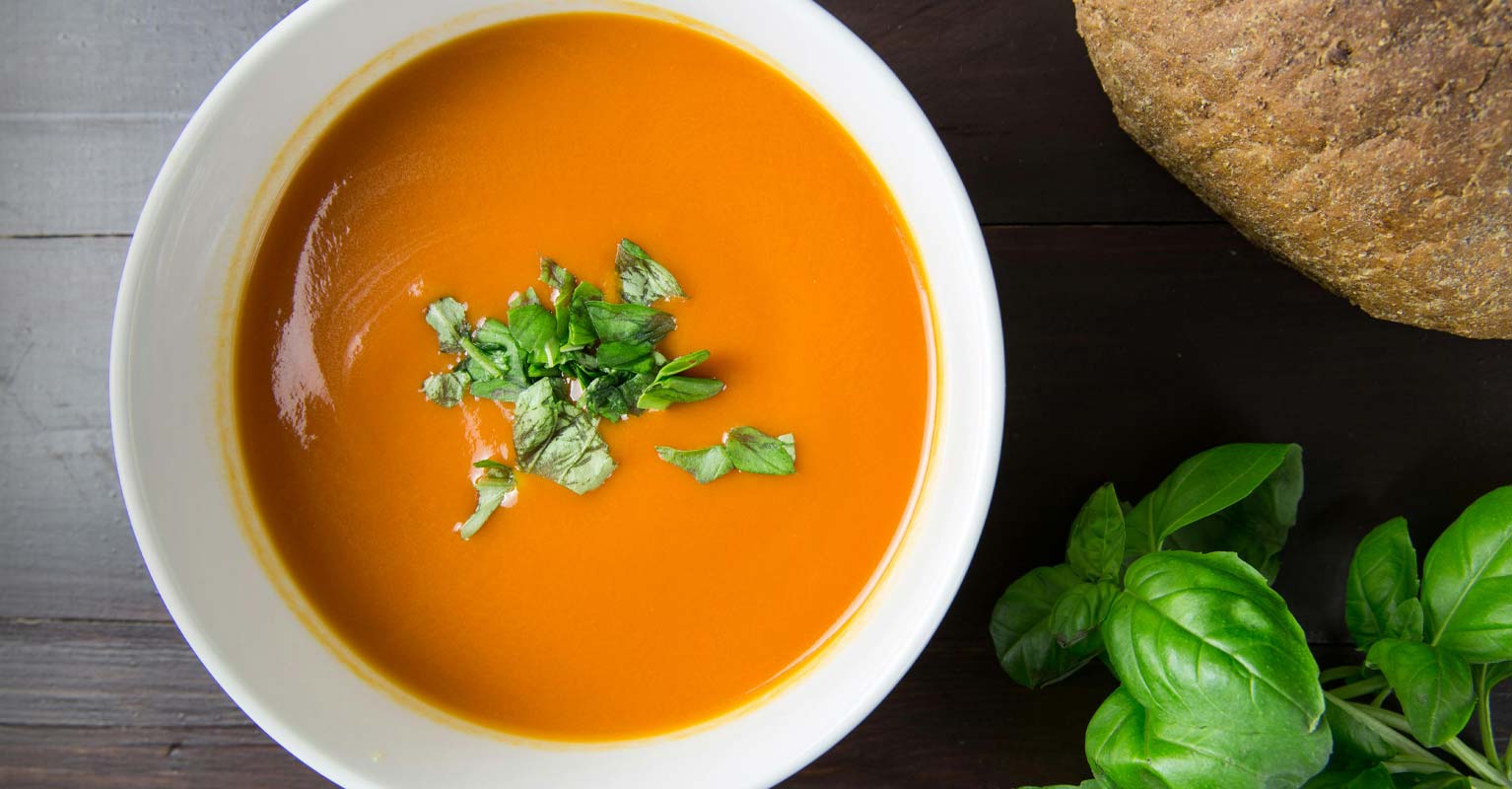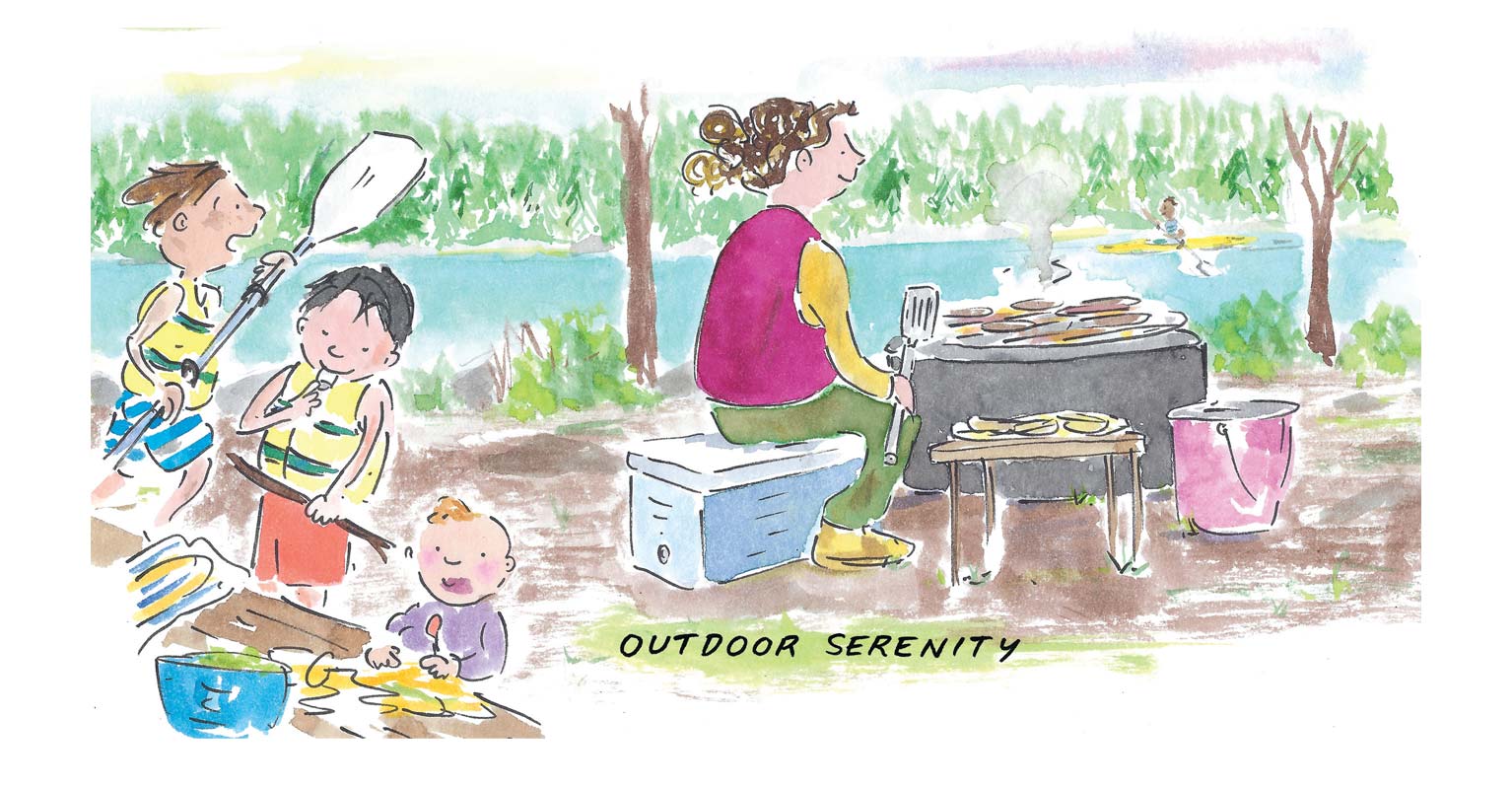Jill Falcon Mackin, director of MSU’s Buffalo Nations Food System Initiative, is collaborating with community members and MSU to recover traditional Indigenous knowledge and reclaim food sovereignty.
“An ancestral garden … allows us to come back into relationship with the ancestral foods we coevolved with. It’s a relationship that goes to a genetic level, and research shows it helps predispose us to health.” —Jill Falcon Mackin
STARTING IN A GARDEN
Food, seeds, cultural-knowledge recovery, education, skills, and the ability to make a difference—these are the harvest of Bozeman’s five Indigenous community gardens. The first and oldest, which was started in 2018, is located at the Story Mill Park Learning Garden and Food Forest along Bridger Drive. The sign outside the gate proclaims its Indigenous perspective, stating, “The Garden is the Teacher.” The second-oldest garden is the Ancestral Garden at the MSU Horticulture Farm located off West Garfield Street at MSU’s BART Farms, created in 2021. The three newest gardens are tucked neatly between MSU’s American Indian Hall and Hannon Hall. The entire area community is welcome in all five gardens.
LEARNING DIFFERENT WAYS
“Story Mill was originally intended for fairly intensive development,” says Mattie Griswold, an AmeriCorps VISTA veteran currently pursuing a master’s degree in sustainable food systems at MSU. Griswold helped get the Story Mill garden going and she says when the Trust for Public Land purchased Story Mill, the organization started working with the City on plans for the area.
With public input, Griswold says, it became clear there was interest in creating a new community garden to address maxed out capacity and waitlists at other community gardens. To realize the community’s vision of a garden where anyone could walk through, taste, and harvest in small quantities, partners like the Gallatin Valley Food Bank were brought in.
“That made a lot of sense,” Griswold says, “because the food bank was trying to think of creative ways to reduce stigma around food insecurity under the leadership of [Food and Nutrition Department Director] Jill Holder.” The Story Mill garden does that through a free and open harvest policy.
“When I started in 2018, we decided to pull sustainable groups in to plant the gardens and showcase different ways to grow food and medicines in Montana. The Indigenous garden is a big piece of that. One of the most important things we can do for ourselves and our shared community is to see and learn different ways of doing things.”
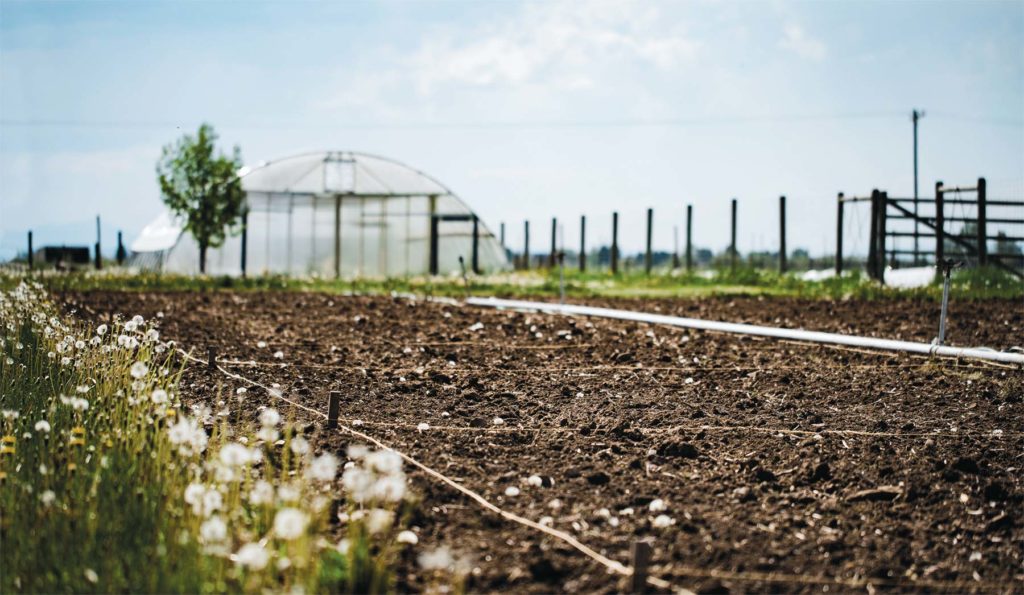
RESTORING THE ANCESTORS
At the Ancestral Garden, seeds from at-risk Indigenous varieties of squash, beans, corn, sunflowers, and other plants are grown out by MSU students, professors, and Indigenous elders using traditional planting methods. Students also learn traditional harvesting and seed-drying methods. Dried seeds are placed in the American Indian Hall seed bank and are distributed to tribal communities around the state Community members grow out the seeds, use some of the plants for food, maintain seeds for their own use, and return extra seeds to the seed bank.
“Our lands and people have become fractionated,” says Jill Falcon Mackin (Turtle Mountain Anishinaabe), director of MSU’s new Buffalo Nations Food System Initiative, while describing the seed-saving practices and related knowledge transfer that ended when people were relocated to reservations away from plants and lands they knew.
“Many of us living now have not had the opportunity for knowledge to be passed down from generation to generation,” Mackin adds. “An ancestral garden supplies a space for this cultural knowledge recovery to occur, and it allows us to come back into relationship with the ancestral foods we co-evolved with. It’s a relationship that goes to a genetic level, and research shows it helps predispose us to health.”
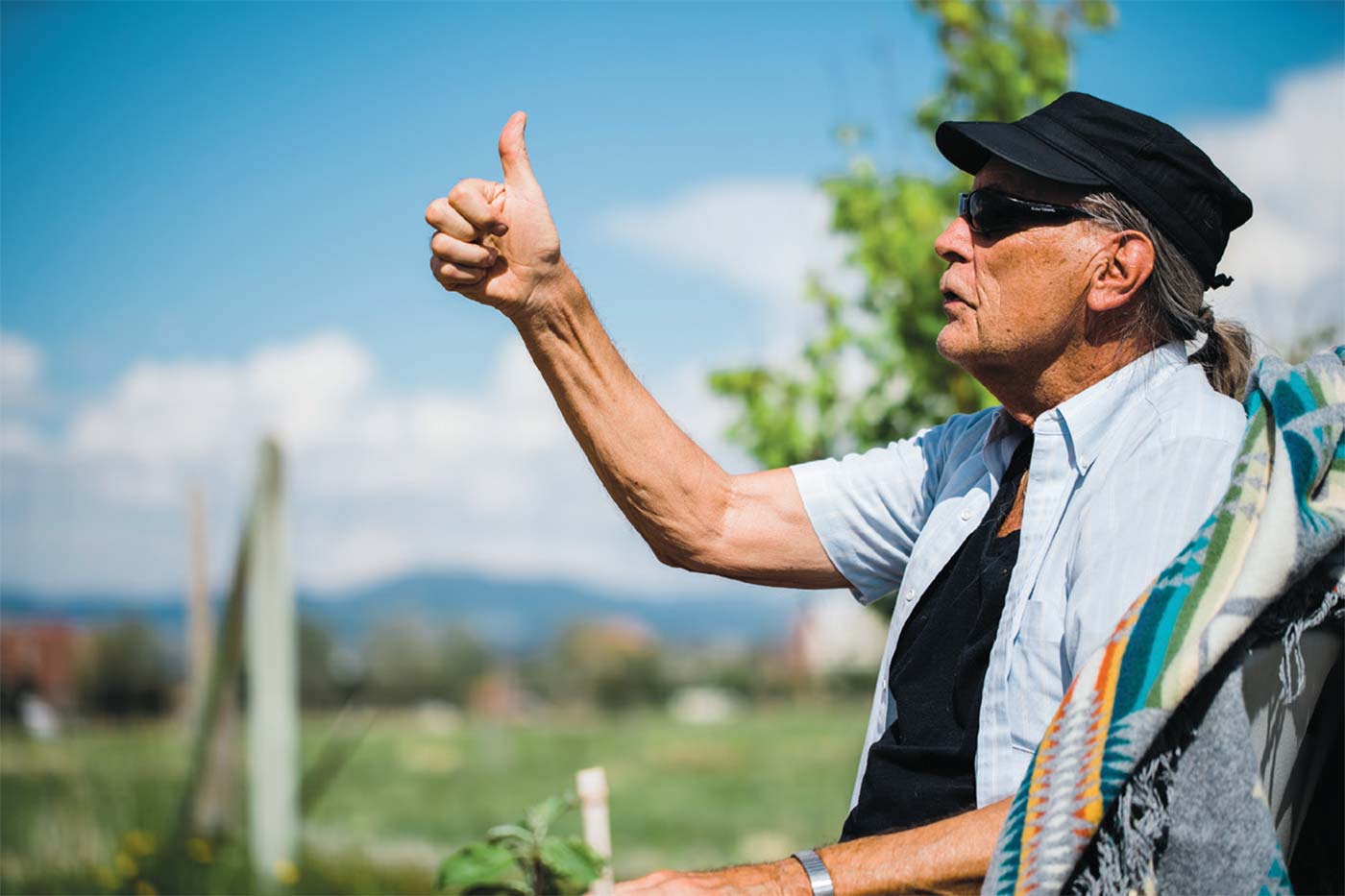
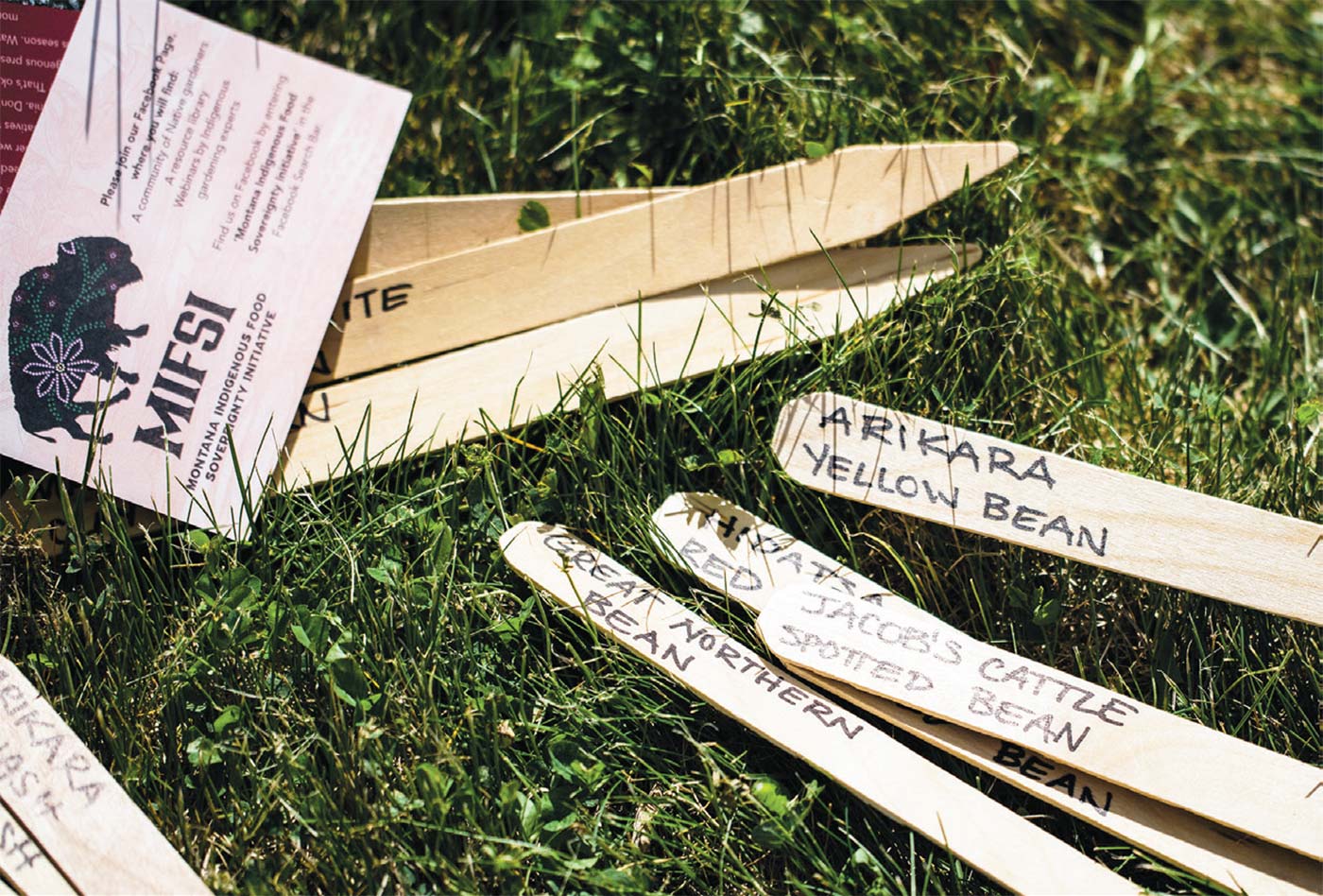
RESURRECTING TRADITIONAL FOODS
Walter Fleming (Kickapoo Tribe of Kansas), who chairs MSU’s Native American Studies Department, grew up in Lame Deer, Montana, on the Northern Cheyenne Indian Reservation. He’s taught at MSU since 1979.
Before construction began on the American Indian Hall in 2020, MSU groundskeepers had planted Indigenous plants in scattered areas around campus but had not put in a completely Indigenous landscape in any one area. Construction of the American Indian Hall changed that.
“We knew we could do standard landscaping,” Fleming says, “but it seemed like a natural to put in Indigenous plants.”
To plan MSU’s garden, Fleming looked at Indigenous gardens at other universities including Portland State University and the University of Montana. Elders from around the state helped create a list of native medicinal plants suitable for the Bozeman garden. The medicinal garden was established in 2021. Edible, non-medicinal gardens were not part of the original plan, but Fleming says they added the edible gardens this spring to honor the intention of American Indian Hall and to continue the work that was already started with the Buffalo Nations Ancestral Garden.
The culinary gardens include both plants native to Montana and plants acquired through trade with tribes now outside the area known as Montana. They surround American Indian Hall, the first LEED Platinum–certified building in Montana (the most prestigious energy/climate efficiency award a building can win) and a recent winner of a cultural heritage award from Bozeman’s Historic Preservation Advisory Board.
“Since I started here, I’ve watched this beautiful building go up and been just fascinated with all the plants going in around it,” says Chef Mike Dean, director of the Gallatin College Culinary Arts Program. Dean spent 35 years with Xanterra Parks and Resorts in Yellowstone National Park, including 18 years as executive sous chef and six years as executive chef, before coming to MSU.
“At Yellowstone National Park, I was on the forefront, I thought, of local, fresh food,” Dean says. But he says he wasn’t thinking then about the bigger picture of plants native to the area, or of Indigenous peoples and the historical and cultural aspects of plants as traditional foods.
“Now I’m thinking about all of that from a culinary perspective and asking, ‘What can we do to help resurrect traditional foods?’”
This spring, James Beard Award–winning Chef Sean Sherman of The Sioux Chef Company taught in the Culinary Arts program, which further sparked Dean’s interest in Indigenous foods. Dean says he’s exploring the pantry section of The Sioux Chef ’s Indigenous Kitchen Cookbook and is eagerly awaiting foods from the gardens that he and his students can learn from this fall.
Dean says the majority of the Culinary Arts students come from Montana. “They’re already asking about the Indigenous plants and how and why we’re going to work with them. Students should learn this knowledge and history whether they’ve studied it before or not.”
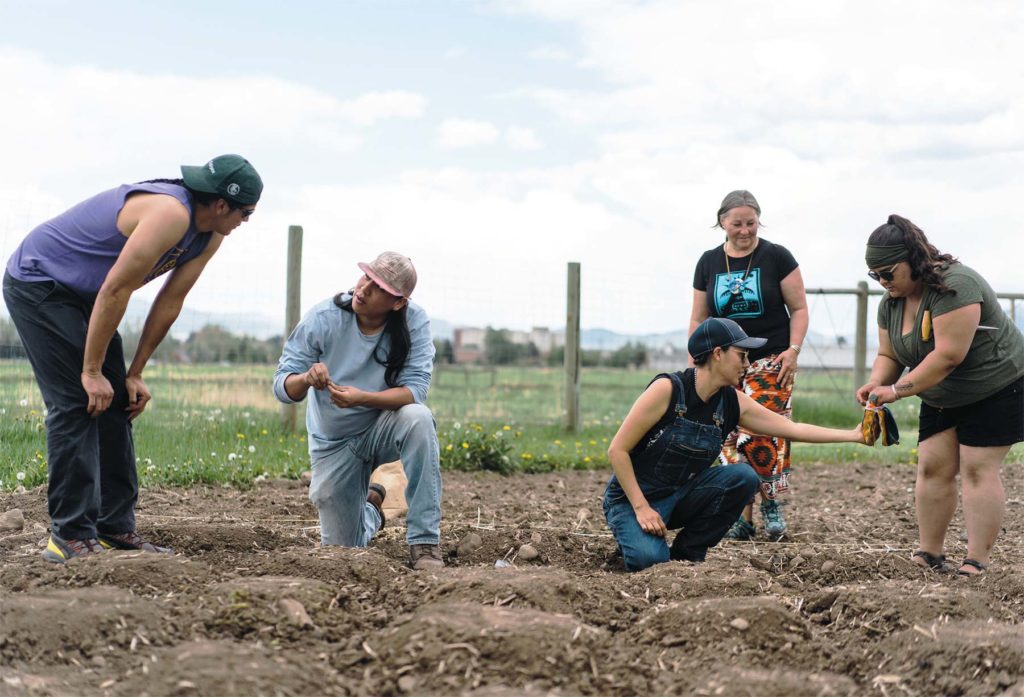
SEEING THE WORLD
Kristin Ruppel, an MSU associate professor who teaches about Native food systems and is the Native American Studies online program chair, believes that the five Indigenous gardens in Bozeman teach a completely different way of seeing the world.
“It’s the first time most non-Native students see the plants as relations and beings in their own right,” Ruppel says. “We read about kincentric ecology, but students working in the garden get to … hold the seeds and the plants, and they learn to relate to them.
Students may forget much of what they read during college, but this is the kind of experience they will remember.” Ruppel says she hopes the new Indigenous culinary gardens inspire a sense of curiosity. “Being curious helps us access a different part of our brain. When we’re curious and doing something physical together, like gardening and gathering berries, it focuses our attention in the moment and then expands our attention to others.”
For Fleming, these gardens are an important first step. “Our hope has always been about supporting the need to be self-suffi cient and food sovereign, and that can start with a garden,” he says. “There can be nutrition education. And then maybe culinary education. You have to start someplace.” Fleming says the department hopes to build on momentum started with the Indigenous gardens. Through a continued relationship with Sherman and The Sioux Chef Company, MSU hopes the company will build their next Indigenous food lab here in Bozeman.
This fall, food from the gardens that isn’t used for seed saving or in the Culinary Arts program will fi nd its way into a unique, independent-study doctoral class. Class members will preserve the foods, using both traditional and Western practices, and these preserved foods will be included in health and nutrition studies designed to measure the impacts of consuming Indigenous food on biomarkers for diabetes, heart disease, suicide, and other diseases disparately aff ecting Indigenous populations. This project is one example of what Fleming calls “taking action in our little corner.”
“My overall philosophy is that we spend a lot of time thinking about ourselves,” Fleming says. “But we’re just one dot on a map. There are a lot of other dots. We have to find a way to connect. … If we’re making a diff erence here, then hopefully someone else is making a diff erence somewhere else.”


